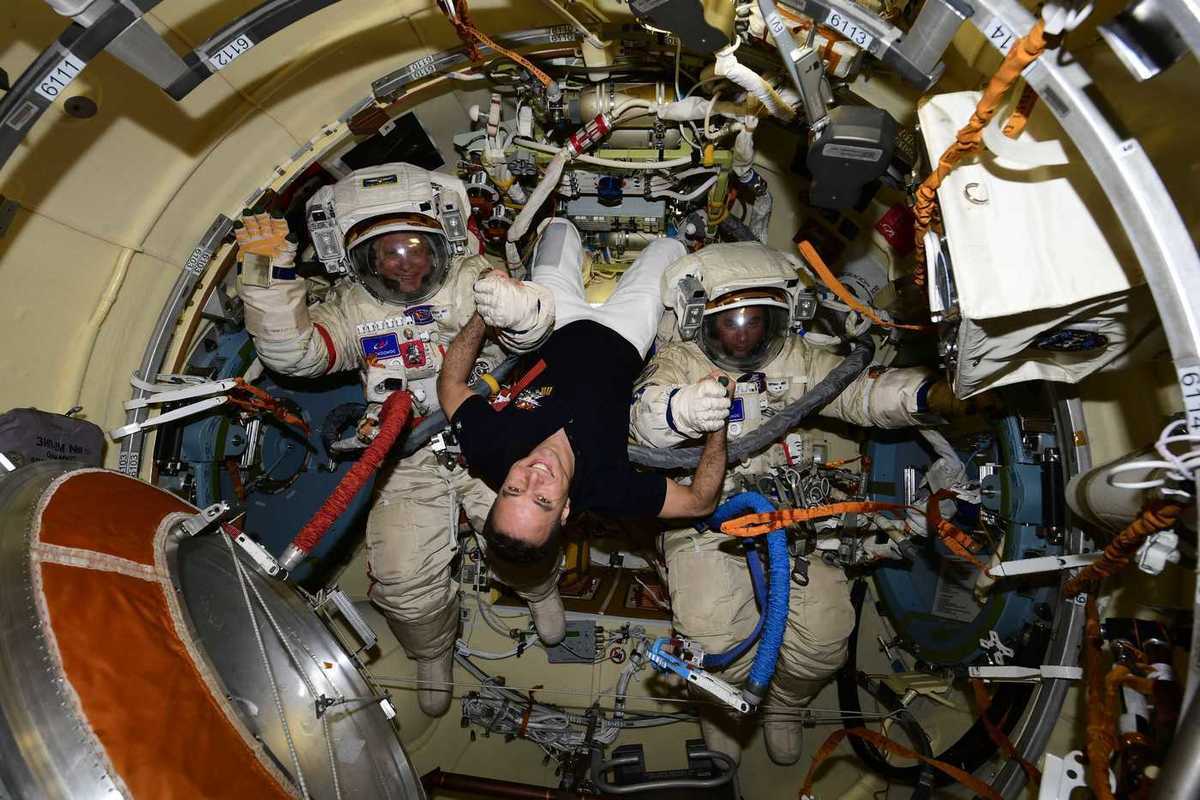Russian scientists decided to study the plasticity of the brain after exposure to galactic rays
[ad_1]

Radiation safety in space was discussed in Moscow on the eve of Cosmonautics Day
Experts have established the maximum length of stay of cosmonauts at the future Russian Orbital Station (ROS). Given its high-latitude orbit, where the radiation level will be significantly higher than on the ISS, people will not be able to stay on it for more than 8 months. Experts from Russian institutes spoke about this, as well as how scientists plan to protect members of the ROS, as well as participants in lunar and interplanetary expeditions, on the eve of Cosmonautics Day.
According to the director of the Institute of Medical and Biological Problems of the Russian Academy of Sciences, Academician of the Russian Academy of Sciences Oleg Orlov, issues of protection from solar and cosmic rays are currently being worked out both within the framework of ground-based research and in space. In particular, preparations are being made for a flight into orbit of the Bion-M biosatellite with animals on which scientists intend to test the effects of cosmic radiation.
In addition, the institute’s specialists are actively developing individual and collective means of protecting astronauts and shelters. For example, already now on the ISS, cosmonauts are protected from serious proton events by the “Protective Curtain” – this is a fabric curtain-screen, the main anti-radiation element of which is wet sanitary napkins inserted into special pockets (water is one of the main protective means of the harmful effects of radiation). In addition, two years ago, a specially developed composite material for individual protective clothing and interior decoration of the habitable module interior was delivered to the ISS.
According to the scientific director of the Space Research Institute of the Russian Academy of Sciences, Lev Zeleny, a more serious danger than the one that currently exists on the ISS and the one that awaits lunar crews are galactic cosmic rays that will affect astronauts when flying to Mars. The academician gave the example of an experiment on mice, which, after exposure to similar rays on earth, “quickly and irreversibly” lost their cognitive functions.
“We will fly to the Moon, there is a shelter there – regolith, from which we can build homes for the first settlers, but the road to Mars still seems to me to be a one-way road,” summed up Lev Zeleny.
In turn, Oleg Orlov noted that the influence of heavy galactic rays on the brain structures of living beings has not been fully studied. “There is such a thing as individual sensitivity to radiation,” said the scientist, “organisms that are more or less resistant to it. We are conducting comprehensive work to study this sensitivity with our astronauts aboard the space station. In addition, the possibility of plasticity of brain structures, that is, the ability of some damaged areas of the brain to transfer their functions to other areas, remains unexplored at present. Prevention measures, including pharmacological ones, can also play an important role in protecting people from radiation.”
[ad_2]
Source link








